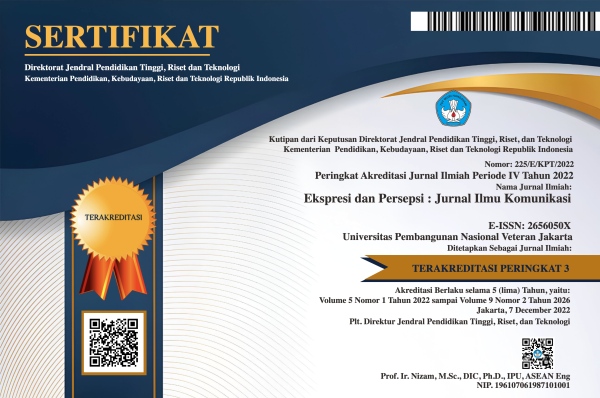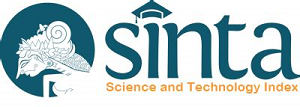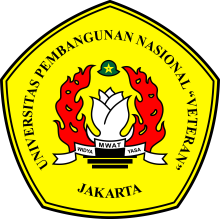Optimizing Positive e-Word of Mouth: Unveiling the Influence of Brand Personification, Social Presence, and Message Characteristics
DOI:
https://doi.org/10.33822/jep.v7i1.7185Keywords:
brand personification, message characteristics, positive e-word of mouth intention, social presenceAbstract
Several companies aim to enhance digital marketing communication processes to achieve desired outcomes. Strategies include brand personification, embodying a human persona for the brand, and fostering social presence, perceived through communication activities. The characteristics of the message also play a significant role. However, research on the role of brand personification, social presence, and message characteristics on Instagram remains scarce. This study investigates their influence on positive e-word-of-mouth intention within Indonesia's telecommunication service provider industry. A quantitative research method is employed, using Structural Equation Modeling (SEM) with the Lisrel program for data analysis from 254 respondents, findings indicate significant effects. Brand personification, social presence, and message characteristics positively impact e-word-of-mouth intention, with respective influences of 0.17, 0.27, and 0.40. The study suggests telecommunication companies leverage these factors to cultivate positive e-word-of-mouth intention among customers, aiding in digital marketing effectiveness.
References
Agrawal, S., Khandelwal, U., & Bajpai, N. (2020). Anthropomorphism in Advertising: the Effect of Media on Audience Attitude. Journal of Marketing Communications, 27(8), 799–815. https://doi.org/10.1080/13527266.2020.1771403
Ahmad, R., Nawaz, M. R., Ishaq, M. I., Khan, M. M., & Ashraf, H. A. (2023). Social Exchange Theory: Systematic Review and Future Directions. Frontiers in Psychology, 13(January), 1–13. https://doi.org/10.3389/fpsyg.2022.1015921
Braxton, D., & Lau-Gesk, L. (2020). The Impact of Collective Brand Personification on Happiness and Brand Loyalty. European Journal of Marketing, 54(10), 2365–2386. https://doi.org/10.1108/EJM-12-2019-0940
Budiharso, R., Burhanudin, A. Y., & Damayanti, R. (2020). Peran Penting Komunikasi Word of Mouth terhadap Keputusan Pembelian di Rumah Makan Bakso Kadipolo Surakarta. Smooting, 18(2), 167–174. Retrieved from http://ejournal.unsa.ac.id/index.php/smooting/article/view/423%0Ahttp://ejournal.unsa.ac.id/index.php/smooting/article/viewFile/423/248
Cahyani, I. P. (2020). Membangun Engagement melalui Platform Digital (Studi Kasus Flip sebagai Start-Up Fintech). Ekspresi Dan Persepsi : Jurnal Ilmu Komunikasi, 3(2), 76–87. https://doi.org/10.33822/jep.v3i2.1668
Chen, K.-J., & Lin, J.-S. (2021). Revisiting the Effects of Anthropomorphism on Brand Relationship Outcomes: the Moderating Role of Psychological Disposition. European Journal of Marketing, 55(8), 2174–2200. https://doi.org/10.1108/EJM-07-2018-0471
Cohen, R. J. (2014). Brand Personification: Introduction and Overview. Psychology and Marketing, 31(1), 1–30. https://doi.org/10.1002/mar.20671
Cooper, D. R., & Schindler, P. S. (2014). Business Research Methods (12th ed.). New York: McGraw Hill.
Dwivedi, Y. K., Ismagilova, E., Hughes, D. L., Carlson, J., Filieri, R., Jacobson, J., Wang, Y. (2021). Setting the Future of Digital and Social Media Marketing Research: Perspectives and Research Propositions. International Journal of Information Management, 59 (July 2020), 102168. https://doi.org/10.1016/j.ijinfomgt.2020.102168
Fattah, R. A., & Sujono, F. K. (2020). Social Presence of Ruangguru in Social Media during Covid-19 Pandemic. Jurnal The Messenger, 12(2), 180. https://doi.org/10.26623/themessenger.v12i2.2276
Ferreira, M., Rolim, V., Mello, R. F., Lins, R. D., Chen, G., & Gaševic, D. (2020). Towards Automatic Content Analysis of Social Presence in Transcripts of Online Discussions. In ACM International Conference Proceeding Series (pp. 141–150). https://doi.org/10.1145/3375462.3375495
Fitrianingsih, & Fatikh, M. A. (2021). Pertimbangan Konsumen Memilih Provider Telkomsel daripada Indosat , XL ( Penerapan Teori Uses and Gratifications Magister Unitomo). Jurnal Komunikasi Islam, 02(1), 15–28. Retrieved from http://ejurnal.iaipd-nganjuk.ac.id/index.php/j-kis/
Hardani, Auliya, N. H., Andriani, H., & Fardani, R. A. (2020). Metode Penelitian Kualitatif dan Kuantitatif. Yogyakarta: Pustaka Ilmu.
Ibrahim, A., Zurriyati, R., Utami, M. A., Octaria, S. L., Wahyuni, T., Siadnyani, L., & Yusmaniarti. (2020). Implementation of Social Customer Relationship Management Using Instagram and Facebook as Songket Marketing Media. In Advances in Intelligent Systems Research, volume 172 Sriwijaya International Conference on Information Technology and Its Applications (SICONIAN 2019). https://doi.org/10.2991/aisr.k.200424.085
Ibrahim, B., & Aljarah, A. (2023). The Era of Instagram Expansion: Matching Social Media Marketing Activities and Brand Loyalty through Customer Relationship Quality. Journal of Marketing Communications, 29(1), 1–25. https://doi.org/10.1080/13527266.2021.1984279
Jahan, N., & Kim, S. W. (2021). Understanding Online Community Participation Behavior and Perceived Benefits: A Social Exchange Theory Perspective. PSU Research Review, 5(2), 85–100. https://doi.org/10.1108/PRR-12-2019-0036
Kehrwald, B. (2011). Social Presence and Online Communication: A Response to Mersham. Journal of Open, Flexible and Distance Learning, 14(1), 29–46. Retrieved from http://journals.akoaotearoa.ac.nz/index.php/JOFDL/article/view/28
Kreijns, K., Xu, K., & Weidlich, J. (2022). Social Presence: Conceptualization and Measurement. Educational Psychology Review, 34(1), 139–170. https://doi.org/10.1007/s10648-021-09623-8
Kussusanti, K., Arindita, R., Atmadi, G., & Arifah, N. (2021). Online Communications in Medical Mobile Application: Customer Complaint’s Assertiveness During Covid-19 Pandemic. 3rd Jogjakarta Communication, 596(Jcc), 46–51. Retrieved from https://www.atlantis-press.com/proceedings/jcc-21/125964683%0Ahttps://www.atlantis-press.com/article/125964683.pdf
Kussusanti, K., Tjiptoherijanto, P., Halim, R. E., & Furinto, A. (2019). Informational Justice and Post-Recovery Satisfaction in e-Commerce: The Role of Service Failure Severity on Behavioral Intentions. Journal of Asian Finance, Economics and Business, 6(1), 129–139. https://doi.org/10.13106/jafeb.2019.vol6.no1.129
Kussusanti, K., Tjiptoherijanto, P., Halim, R. E., & Furinto, A. (2021). The Role of Communication Justice and Assertive Communication in B2C Marketplace Post Recovery Satisfaction. International Journal of Social Science and Human Research, 04(06), 1342–1353. https://doi.org/10.47191/ijsshr/v4-i6-18
Lowenthal, P. R., & Dunlap, J. C. (2020). Social Presence and Online Discussions: A Mixed Method Investigation. Distance Education, 41(4), 490–514. https://doi.org/10.1080/01587919.2020.1821603
Malhotra, N. K. (2010). Marketing Research, An Applied Orientation (6th ed.). New Jersey: Pearson Education, Inc.
Manzoor, U., Baig, S. A., Usman, M., & Shahid, M. I. (2020). Factors Affecting Brand Switching Behavior in Telecommunication: A Quantitative Investigation in Faisalabad Region. Journal of Marketing and Information Systems, 3(1), 63–82. Retrieved from http://readersinsight.net/JMIS
Natiqa, D., Kusumawati, N., & Aprilianty, F. (2022). The Effect of Instagram on Customer Relationship, Customer Equity, and Purchase Intention Towards Luxury Fashion Brands. In The 4th International Conference on Economics, Business and Economic Education Science. https://doi.org/10.4108/eai.27-7-2021.2316834
Neuman, W. L. (2014). Social Research Methods: Qualitative and Quantitative Approaches (7th ed.). London: Pearson Education.
Norz, L. M., Dornauer, V., Hackl, W. O., & Ammenwerth, E. (2023). Measuring Social Presence in Online-Based Learning: An Exploratory Path Analysis Using Log Data and Social Network Analysis. Internet and Higher Education, 56(October 2022), 100894. https://doi.org/10.1016/j.iheduc.2022.100894
Nugroho, T. A., & Azzahra, F. C. (2022). Pemanfaatan Instagram sebagai Media Promosi Social Commerce Usaha Bro.Do. Jurnal Pustaka Komunikasi, 5(1), 136–149. https://doi.org/10.32509/pustakom.v5i1.1883
Oedi, R. F., Erawan, E., & Dwivayani, K. D. (2020). Strategi Humas Polisi Resort Kota Samarinda dalam Menangani Berita Hoax di Samarinda Public Relations. Jasima: Jurnal Komunikasi Korporasi dan Media, I(1), 52–70.
Ortiz, J., Chiu, T.-S., Wen-Hai, C., & Hsu, C.-W. (2017). Perceived Justice, Emotions, and Behavioral Intentions in the Taiwanese Food and Beverage Industry. International Journal of Conflict Management, 28(4), 437–463. https://doi.org/10.1108/IJCMA-10-2016-0084
Pangestu, Q. D., & Didiek Tranggono. (2022). Pengaruh Content Marketing Instagram terhadap Brand Image Disney +Hotstar di Masa Pandemi Covid-19. Jurnal Signal, 10(1), 124–138. Retrieved from ttp://jurnal.unswagati.ac.id/index.php/Signal
Shankar, V., Grewal, D., Sunder, S., Fossen, B., Peters, K., & Agarwal, A. (2022). Digital Marketing Communication in Global Marketplaces: A Review of Extant Research, Future Directions, and Potential Approaches. International Journal of Research in Marketing, 39(2), 541–565. https://doi.org/10.1016/j.ijresmar.2021.09.005
Singh, D., Bajpai, N., & Kulshreshtha, K. (2021). The Effect of Brand Anthropomorphism on Customers’ Behaviour Towards the Indian Hypermarket Brands. Journal of Creative Communications, 16(3), 266–284. https://doi.org/10.1177/09732586211002104
Solis, B. (2010). Engage. New Jersey: John Wiley & Sons, Inc.
Surma, J. (2016). Social Exchange in Online Social Networks: The Reciprocity Phenomenon on Facebook. Computer Communications, 73, 342–346. https://doi.org/10.1016/j.comcom.2015.06.017
Sutowo, I. R., Waluyo, L. S., Venus, A., Qudus, Z. A., & Sabarina, G. (2023). Komunikasi Pemasaran Objek Wisata Situ Bolang, Indramayu. Ekspresi dan Persepsi : Jurnal Ilmu Komunikasi, 6(1), 86–97. https://doi.org/10.33822/jep.v6i1.5361
Thabibi, A., & Supriyanto, R. (2023). Perbandingan Model Multiple Linear Regression dan Decision Tree Regression (Studi Kasus: Prediksi Harga Saham Telkom, Indosat, dan Xl). Jurnal Ilmiah Teknologi dan Rekayasa, 28(1), 78–92. https://doi.org/10.35760/tr.2023.v28i1.6081
Utami, G. R., & Saputri, M. E. (2020). Pengaruh Social Media Marketing terhadap Customer Engagement dan Loyalitas Merek pada Akun Instagram Tokopedia. Jurnal Riset Manajemen dan Bisnis (JRMB) Fakultas Ekonomi UNIAT, 5(2), 185–198. Retrieved from http://jrmb.ejournal-feuniat.net/index.php/JRMB/article/view/388
Wijanto, S. H. (2015). Metode Penelitian Menggunakan Structural Equation Modeling dengan LISREL 9. Jakarta: Lembaga Penerbit Fakultas Ekonomi Universitas Indonesia.
Zaenudin, H. N., Sartika, R., & Haryanegara, M. E. A. (2021). The Effectiveness Of Policy Communication in Promoting #KangPisMan Program Among University Students. Informasi, 51(2), 345–364. https://doi.org/10.21831/informasi.v51i2.39435
Zhang, S., Tang, G., Li, X., & Ren, A. (2023). The Effects of Appearance Personification of Service Robots on Customer Decision-Making in the Product Recommendation Context. Industrial Management & Data Systems, 123(2), 578–595. https://doi.org/10.1108/IMDS-11-2021-0662
Zou, W., Hu, X., Pan, Z., Li, C., Cai, Y., & Liu, M. (2021). Exploring the Relationship between Social Presence and Learners’ Prestige in MOOC Discussion Forums Using Automated Content Analysis and Social Network Analysis. Computers in Human Behavior, 115, 106582. https://doi.org/10.1016/j.chb.2020.106582
Downloads
Published
Issue
Section
License
Copyright (c) 2024 Kussusanti Kussusanti, Imsar Gunawan

This work is licensed under a Creative Commons Attribution-NonCommercial 4.0 International License.














